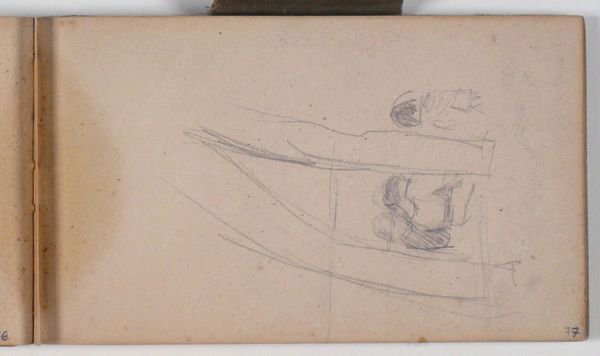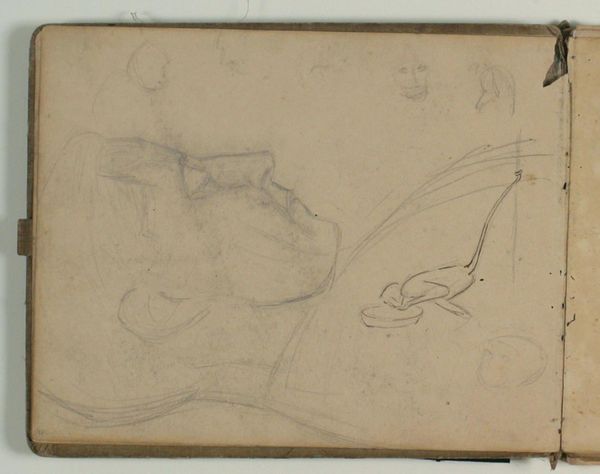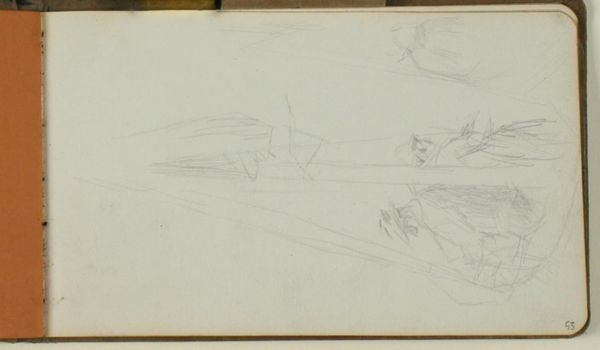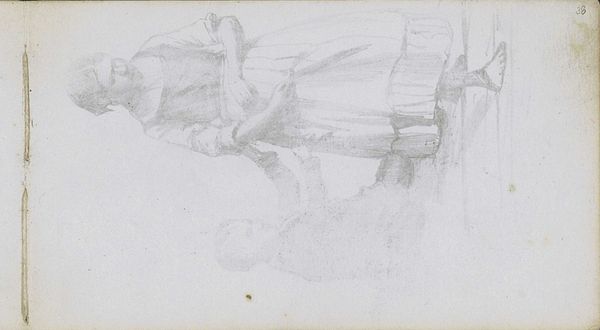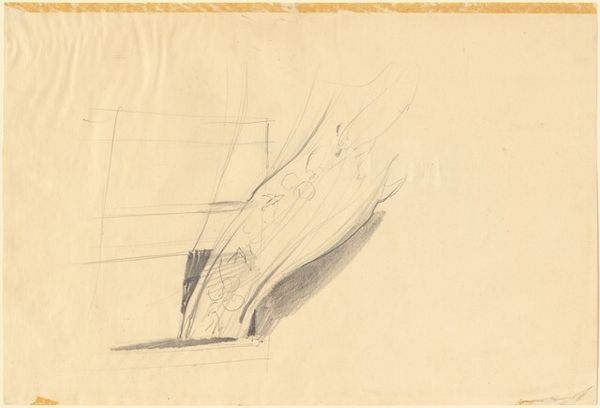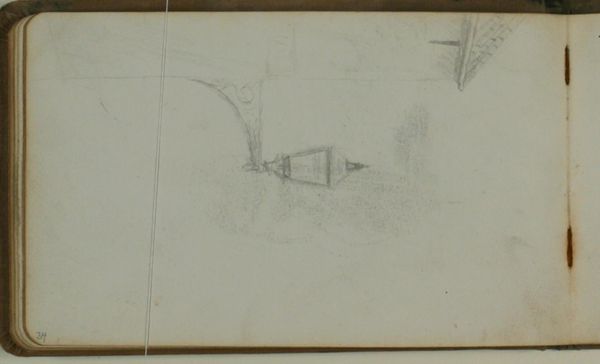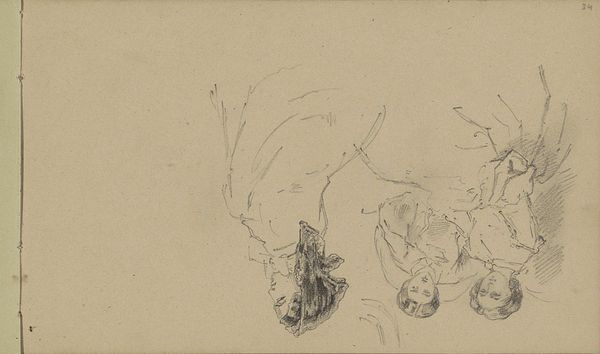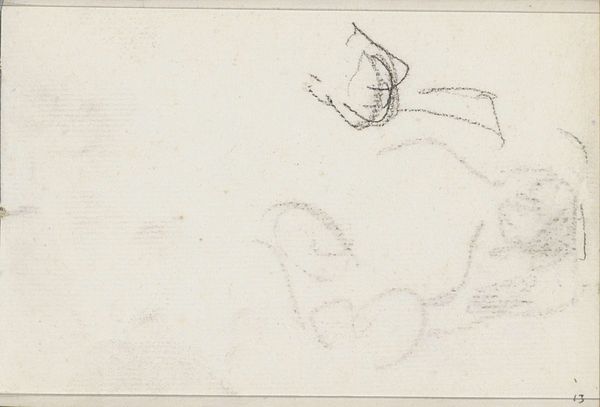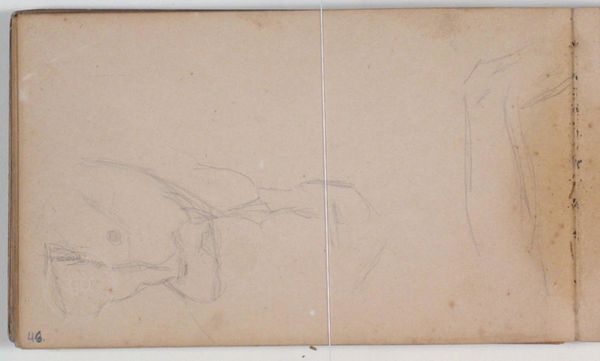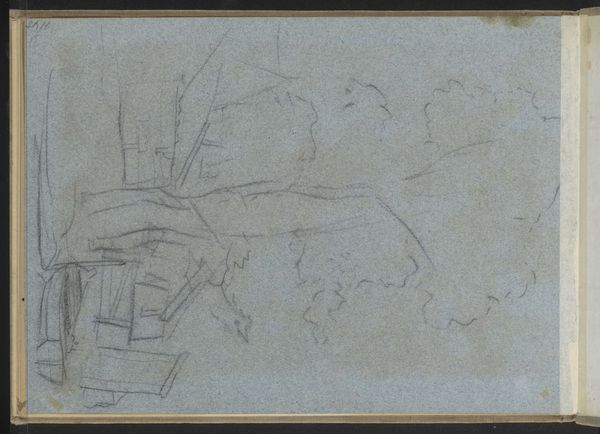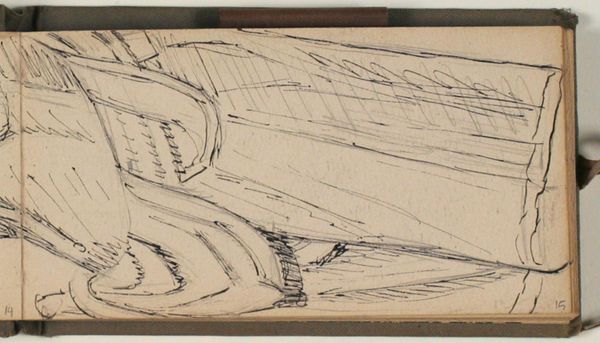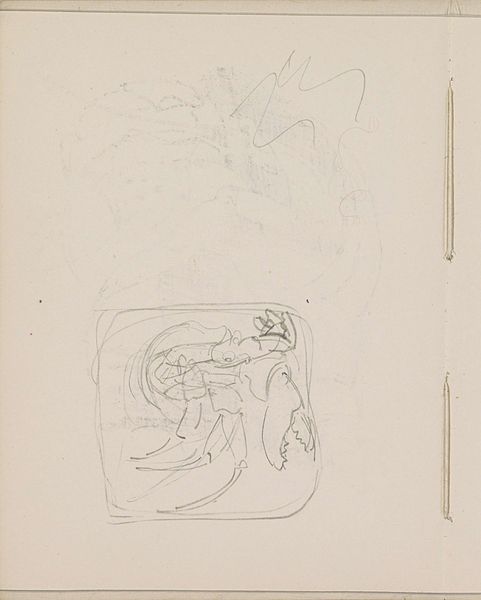
drawing, paper, pencil
#
drawing
#
paper
#
coloured pencil
#
pencil
Dimensions: 113 mm (height) x 182 mm (width) (bladmaal)
Curator: It’s remarkable to observe the artist’s initial strokes in this preparatory drawing. There’s a real sense of immediacy. Editor: It does have a certain ghostly quality. Curator: Here we have "Studies of Ships and Fish," crafted in 1881 by Niels Larsen Stevns. It's primarily rendered in pencil on paper, with subtle hints of colored pencil to suggest tonality. You can currently find it within the collection of the SMK, the National Gallery of Denmark. Editor: Seeing it in the round with those pencil lines makes me think of working-class culture—this feels like the product of maritime trades and labors, doesn't it? Think about how art schools at this time did and didn’t support representation from various populations and experiences. Curator: Absolutely, and examining the material realities, consider the availability of drawing supplies like paper and pencils, how that impacted accessibility to artistic expression across different social strata. Sketches like these challenge conventional boundaries, because it blurs lines between "high art" and functional observation or preparatory sketches by working class people at sea. Editor: True. I'm especially drawn to how Niels Larsen Stevns uses quick, almost gestural lines. Curator: And given Stevns’ background, it makes me wonder who the presumed audience for sketches such as this was, especially within institutional frameworks. Was it meant for public display, or was it something else entirely? Editor: The relative lightness of the strokes would certainly dictate against a dramatic pronouncement. It seems quite muted. Curator: But the sketches reveal much. There are two fish rendered here. The study shows Stevns developing a technical grasp, as a process to observe how objects sit within real maritime environments, not idealized or removed. What does his process suggest about Stevns, his influences, his engagement in artmaking in Copenhagen in the late nineteenth century? Editor: Yes, you get a glimpse of artistic education there and broader socio-cultural debates shaping Stevns. I find these understated drawings provide a fascinating entry point for these topics. Curator: I concur; seeing the initial marks brings us nearer to Niels Larsen Stevns' engagement with labor and craft, and what becomes valuable cultural material over time.
Comments
No comments
Be the first to comment and join the conversation on the ultimate creative platform.
